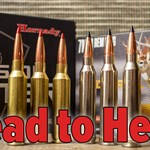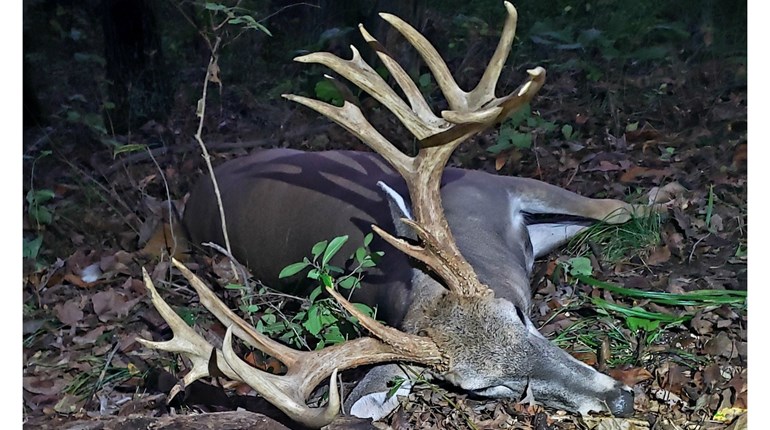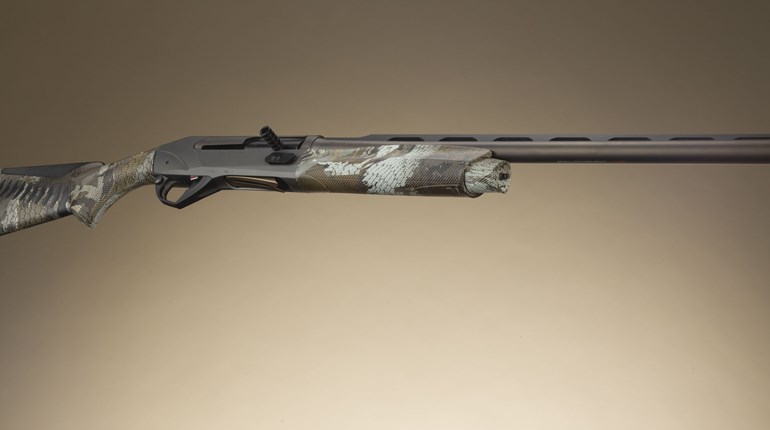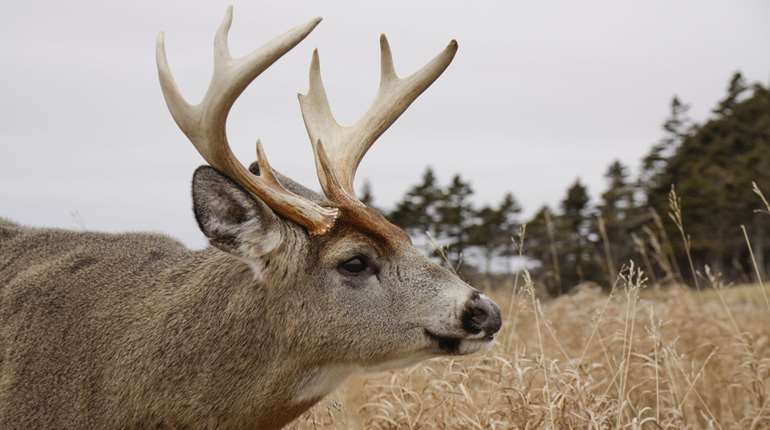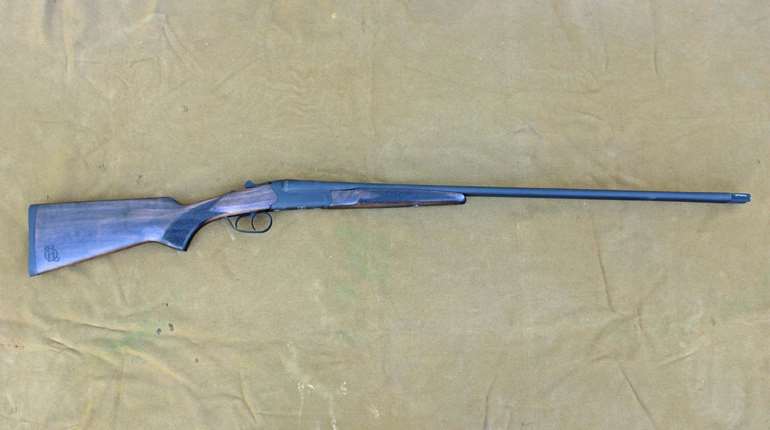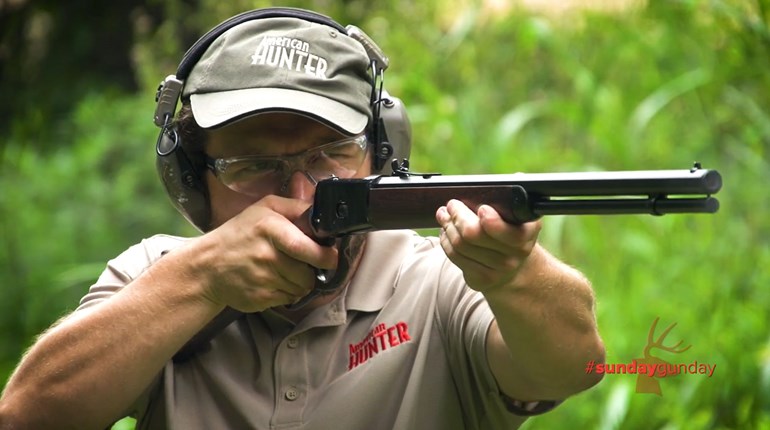
How does one begin a story about Africa? The continent so rich in histories of wildlife and peoples, strife and compromise, triumph and tragedy, yields itself to all storytellers, and yet none. Its vast nature, though captivating to write about, can only be approximated in words, never convincingly described. Making it a hunting tale simply adds another layer of complexity, as the best have already been told. From the simple stories passed down around campfires to published works like Death in the Long Grass, the greatest descriptions of hunting on the continent will forever remain those of the people who tackled it in the 19th and 20th centuries, learning the land and forming a bond with their quarry in a way which can only be approximated in the confines of a guided, weeklong safari. Wittingly or not, at some level every modern African hunting story must be a facsimile of one that came before. These, at least, were the worried thoughts that spun through my mind when my boots first crunched African soil, as I contemplated how to live up to the opportunity of a lifetime.
Those of you who read “Aiming for Africa” in the July issue of American Hunter will recognize this is not the beginning of my story. A weeklong class at Gunsite Academy was the true opener of the trip, designed to prepare us for the unique situations we would encounter on safari. I was about to put that training to the test.

Our hunt had taken a last-minute, southward turn from the thick Limpopo down to the Northern Cape. As such, shots had the potential to be a little farther than anticipated, given the Cape’s potential for wide expanses of grassy savannah. Despite this, our tools were still up to the challenge, with carbine-length barrels on our Mossberg Patriots and 5.5-inch Backcountry Banish suppressors allowing for easy maneuverability, while still being capable of poking out to 350. I had swapped out my long-range Maven RS1.2 as overqualified, in favor of a Maven RS.2. With a simple, second focal plane Duplex reticle, 2-10 magnification and the 200-yard point-blank-zero I had put on the gun, this was a setup ready for lightning-quick engagements—no adjustment required.
As our motley assortment of Hi-Luxes and Land Cruisers rolled away from the Kimberly airport, I had the good fortune of riding shotgun with Heinrich—Hein for short—who was to be my PH for the week. The quintessential picture of an affable Boer, Hein filled me in on the local news around Kimberly as we bounced toward camp, while I peppered him with questions about the place and the animals.
Preparations made and guns trued upon arrival at the beautiful 4Aces Outfitters lodge, we toured the property, which glowed darkly in the fading South Africa sunset. A rainstorm fought for control of the skies, showering purplish hues into the dimming orange of the atmosphere. As I surveyed the backdrop, herds of wildebeest and springbok moving incessantly across the foreground, I began to understand the pull of this place, which has captivated so many of the titans of our trade. Maybe, just maybe, living up to them wasn’t the point. Perhaps this landscape still has more stories to tell, possessing a majesty capable of elevating my own humble work into a worthwhile endeavor. At least one thing was certain as we headed back to camp: I had never been somewhere quite like this.
The morning dawned bright, clear and nowhere near as early as a stateside hunt, as we tucked into a leisurely and delicious breakfast. I paired off with Matt Every, of Field and Stream, and together we rode with Hein to his family’s land to scout for game. It wasn’t long before we spotted some.
Over my short guided-hunting career, I have learned that the first sign of a quality animal is generally the response of your PH, try though you might to spot your quarry first. Sure enough, as I glassed hard at a distant shrubbok (a rare, vegetation-based animal that commonly flummoxes American hunters), Hein began to exhibit all the telltale signs of an excited PH. Bino pressed to his eyes, he gestured to a brush-line some ways away from my unique find. There stood a beautiful impala. I slowly settled onto my shooting sticks, blood pumping in my ears. Two hundred yards; an alert animal; a standing shot to clear the tall grass. This was exactly what Gunsite had prepared us for. As I lowered into my scope, however, the animal was gone. I had hastened too slowly.

Undaunted, Hein pulled the sticks and charged us past the next stand of trees, bringing us back into view of the impala. I would not make the same mistake again. My fore-end settled gently onto my shooting sticks as my hand found its position. My breathing slowed. My finger squeezed. As the solid echo of impact resounded, I knew the impala was down. Score one for Gunsite.
The animal was elegant, with wide, U-shaped horns and a coat the distinctive reddish shade of the sandy African earth—a fitting first kill for the continent. I could hardly believe there were still three animals to go. My sense of disbelief only grew when, a short time later, we found our gemsbok.
A similar sort of stalk ensued, and soon I was staring down at the animal I had most wanted to see. With horns stretching nearly 3 feet in length, the gemsbok seems a relic from a different age. Its nickname—the painted warrior—confirms this. Their massive size and seemingly unwieldy headgear belies a rapid agility that can be fatal, however. As I approached the animal, Hein warned me to stay back until we were certain it had passed—the animal is accurate enough with the needle-like points of its horns to put out an eye with a single motion. Crouching by the gemsbok later, my hand pressed to its coarse hide, my sense of unreality only grew as I watched a herd of wildebeest thunder past at the very edge of my sight.

As the week raced along, that surreal feeling was amplified by the context of our modern age. Herds of animals numbering into the thousands seemed to emerge from every turn. Aptly named springbok bounced along, heads constantly jostling for position above the melee. Black and blue wildebeest, at first so very foreign, began to seem downright common compared to their golden brethren, who occasionally shone in the distance. Meanwhile, giant eland the size of small cars would lumber by, gazing back at us warily. Where else on earth could you see anything like this? Once, the American West looked similar, with herds of elk and bison blotting out the land by the thousand. While longer ago, I’m sure the same was also true across Europe and Asia. But now? This sort of experience remains only here, a testament to the unique efficacy of the African model of conservation. The professional hunters, breeders and other wildlife workers that labor to carry on this system are not simply guides and game farmers; they serve as stewards of a glimpse back in time.

Shortly, Matt and I were again the direct beneficiaries of this system, as another banner day lay ahead. After taking a pair of blesbok (my first shot a miss, thanks to a jerk of the trigger that temporarily classified my rifle as artillery), Matt found himself hot on a zebra. Any who conceive of a zebra as some sort of domestic horse—an easy shot as they graze dumbly in the middle of a pasture—has never encountered one in the field. Mean, smart and fast, the zebra led us all on a chase up and down the densely thicketed hillsides until eventually Matt, Hein and our photographer, Sebastian Mann, broke off alone to keep a lower profile. As I waited by the truck, lounging in a serene contentment I’m not sure I’ll ever equal, a shot rang out across the hills. Thanks to the suppressor, I even heard the distinctive sound of impact. I whooped loudly, forgetting for a moment I was completely alone. He had done it. The drive back to camp with three animals piled into our little truck—one large enough to require a winch—was truly a sight to behold. One animal apiece to go.

The next morning found me downright elated for the day’s events despite the approaching end of our trip. I had settled on a warthog for my final animal, and while I had yet to see a single one Hein had heard a big old boar was frequenting a damp series of nearby hills. Stalking up into the hummocks, we spotted pig tracks everywhere. The boar had to be close. Whether we would see the wily creature was another story.
Cresting the first hill, we dropped into a depression, moving slowly, watching every shrub for signs of movement. Hein stopped and glassed to our left as I surveyed the scene. Just as I began to lapse into my usual mawkish reflections on the magic of this great continent (yes, even I begin to find my own internal monologues grandiloquent after a while), I saw it. A head popped up far to my right. As I turned, an old warthog stared back at me, tusks worn by age and combat. I tapped Hein. “Is that a good one?” Eyes widening in the ubiquitous symbol of the dedicated professional hunter, he stammered, “Shoot it! Shoot it!” I brought the rifle up, remembering the snapshooting lessons from Gunsite. The toe of the stock touched my collarbone as the scope came up to my eye. The warthog was already running as I tracked him through the reticle, waiting for a pause. As soon as he halted, I squeezed, sending a 155-grain Lehigh TME bullet through the center of his vitals, stumbling him back into motion. I racked the bolt and tracked him, hitting him again on the run. Finally, as he quartered hard away I held on his head—the only vital visible on his still-retreating form—and took my last shot in Africa. The old boar somersaulted to a stop. The bullet had gone through his ear.

I’ve laid hands on many fascinating creatures over my time in this job, from the ocellated turkeys of the Yucatán to the gemsbok I’d taken only a few days before, but this was still the most alien thing I had ever seen. The fat deposits on its face—its trademark warts—protrude like stubby antennae, while its tusks grimace a perpetual snarl. Only later did I discover that the pad-like warts serve an important purpose: protecting the animal’s eyes while it digs for food and fights with rivals. As I surveyed the downed warrior, tusks blunted from battle, Africa’s pull cemented itself in my soul for good and blunted any misgivings about the literary task before me. Be it the 19th century or the 21st, this is a land for adventure and those who seek it.
If you’re looking for an adventure of your own, check out 4Aces Outfitters and ask for Hein (4acesoutfitters.com). And before you balk at the idea, thinking it’s unattainable, check the prices. Trust me, I didn’t believe it either, but compared to most out-of-state hunts for animals like elk or moose in the States, you can do a whole lot more hunting in Africa for a whole lot less.

Wiley X Eyewear
Whether you’re seeking a standard set of sunglasses to wear afield, shooting-specific eyewear or even glasses that can help improve your lethality on the hunt, Wiley X has you covered. My go-to eye protection on this hunt (and many since) were the Wiley X Alfas. Polarized, protective and comfortable, the WX Alfas are the perfect all-day companion for sunny days on the savannah. I also brought along the WX Detection 5 Lens Package however, and I’ve got to say, for those looking for true hunt-focused eyewear it’s a hard setup to beat. With five different color lenses, each admitting the perfect amount of light for your specific conditions, the WX Detection makes it nearly effortless to spot game and blood trails in any condition, from sun-drenched days to darkening evenings. Coming in a hard case that’s easy to throw into a hunting pack, lenses interchange with snappable ease, making it simple and fast to transition to the optimal lens for any condition in the field. They also lack a rim, preserving your entire field of view. Both the Detections and Alfas meet ANSI Z87.1 standards for impact protection. wileyx.com
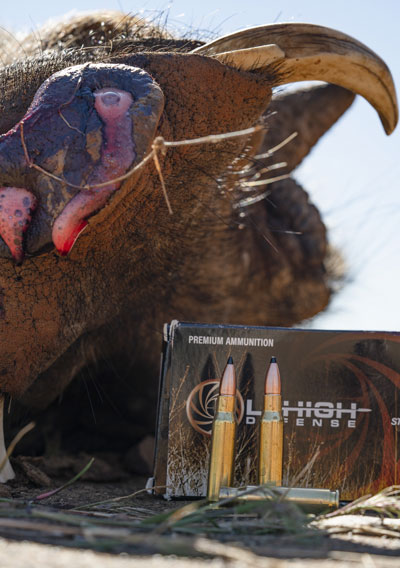
Lehigh Defense Total Maximum Expansion
Africa approved. That’s what I heard from Hein and the other PHs after a solid week of watching us hunt with these (and other) Lehigh Defense projectiles. African game is notoriously tough to drop, particularly if your shot isn’t perfect. An animal here has a habit of running a ways even if it does eventually stop. There is no room for error in projectiles on this continent; a bullet that does not retain enough weight, pencils through or shrapnels apart will simply not put hides in the dirt. The TME has no such failures and no such issue. The design features a high-BC bullet tip that does not expand on bone, but does allow the bullet to expand up to twice its original size in body tissue, with four petals and near 99 percent weight retention. This is thanks also to the projectile’s deep-penetrating, solid-copper monolithic design. Not simply a heart stopper, Lehigh’s 155-grain TME in .308 Win. boasts a .342 ballistic coefficient, and travels 2800 fps with 2,699 ft.-lbs. of muzzle energy from a 20-inch barrel. This is a bullet I would trust on anything shy of dangerous game, and in a higher caliber and heavier weight, I would probably reach for TME to tackle that as well. MSRP: $72.95 per box of 20. lehighdefense.com

Meindl Comfort Fit Light Hiker
The best exposure a boot can receive in a story is to not be mentioned at all. Before you think I’m simply trying to avoid work, let me explain. If boots are a focal point in any event affecting a hunt, it either means that: a) you encountered a dangerous situation and had to rely on their grip to keep yourself intact; or b) they leaked, were uncomfortable or in some way made you think about your feet. Meindl’s Comfort Fit Light Hiker passed this latter test with flying colors. Rugged, dependable, comfortable and lighter than most hunting boots at around 2.9 pounds per pair, they easily turned the African thorns and provided me miles of comfortable stalking. In fact, they were so comfortable, some days I can honestly say I forgot I was wearing boots at all. If you’re looking for footwear to tack on miles in a warmer clime, check out a pair. You won’t be disappointed. MSRP: $250. meindlusa.com

Mossberg Patriot Carbine
I know I already paid a fair amount of homage to this sharp little shooter in my previous article on the Gunsite training course, but it deserves a separate encomium for its performance in the field. The gun’s dimensions are simply perfect. With a 5.5-inch Backcountry Banish attached, you can carry it muzzle up, muzzle down, slung, held crossways, etc., without ever bumping or catching it on your environs (okay, I’m sure you could, but you’d have to try pretty hard). At 6.2 pounds, it’s extremely lightweight, and perfectly balanced to rapidly throw up to your shoulder for an offhand shot. With the Banish attached, taking the overall length from 36.5 inches (with a 16.25-inch barrel) to just 42 inches, the gun is quiet, low-recoiling and an absolute joy to shoot, with impressive accuracy potential to boot. The five-round, flush-fit detachable box magazine also makes the gun easy to reload by just carrying a spare magazine on your belt or in your pocket, while retaining the ability to top-load single rounds on the fly. Whether you’re headed to Africa or simply stalking the deer woods, if you’re looking for an eminently portable shooter, give the Patriot Carbine a look. MSRP: $515. mossberg.com











